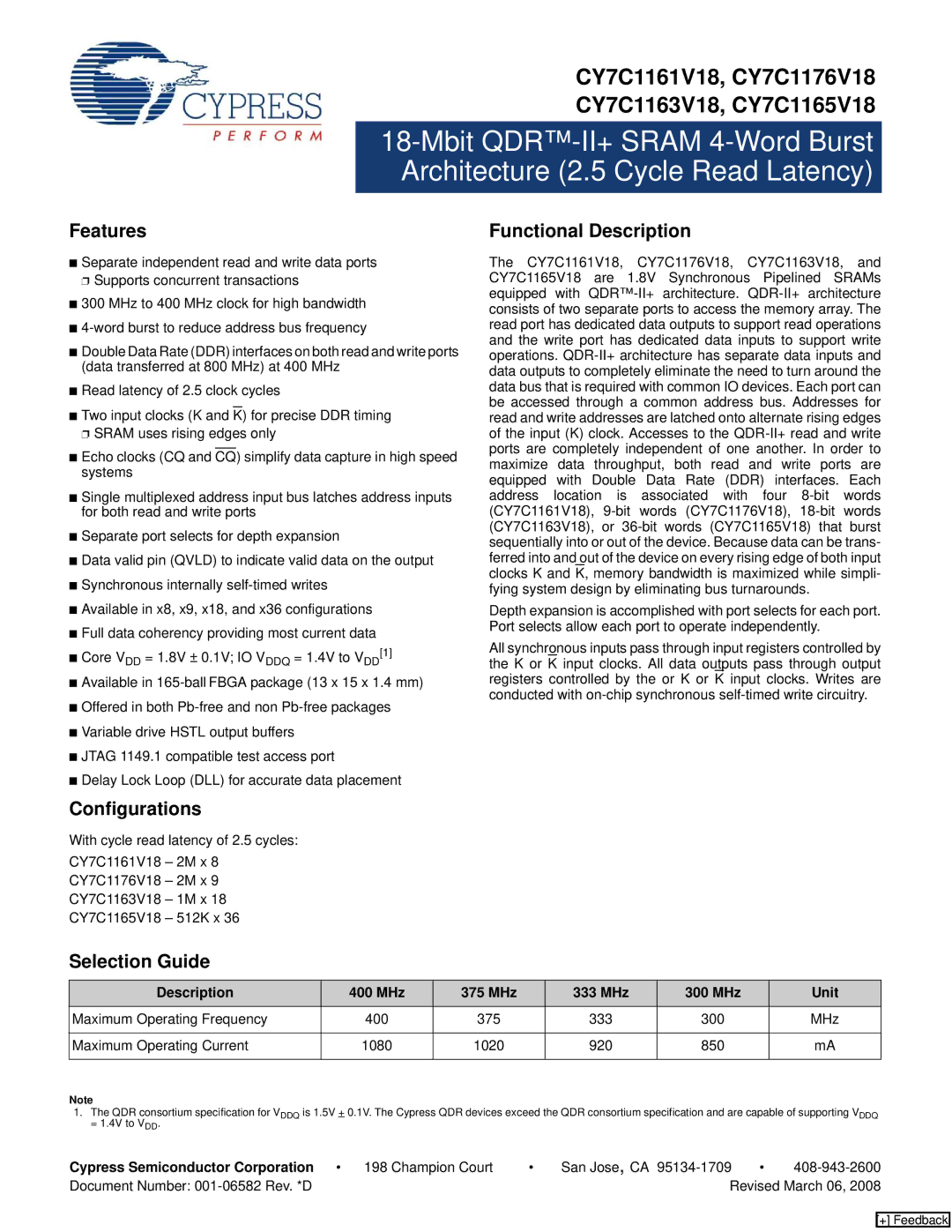
CY7C1161V18, CY7C1176V18
CY7C1163V18, CY7C1165V18
Features
■Separate independent read and write data ports
❐Supports concurrent transactions
■300 MHz to 400 MHz clock for high bandwidth
■
■Double Data Rate (DDR) interfaces on both read and write ports (data transferred at 800 MHz) at 400 MHz
■Read latency of 2.5 clock cycles
■Two input clocks (K and K) for precise DDR timing
❐SRAM uses rising edges only
■Echo clocks (CQ and CQ) simplify data capture in high speed systems
■Single multiplexed address input bus latches address inputs for both read and write ports
■Separate port selects for depth expansion
■Data valid pin (QVLD) to indicate valid data on the output
■Synchronous internally
■Available in x8, x9, x18, and x36 configurations
■Full data coherency providing most current data
■Core VDD = 1.8V ± 0.1V; IO VDDQ = 1.4V to VDD[1]
■Available in
■Offered in both
■Variable drive HSTL output buffers
■JTAG 1149.1 compatible test access port
■Delay Lock Loop (DLL) for accurate data placement
Functional Description
The CY7C1161V18, CY7C1176V18, CY7C1163V18, and CY7C1165V18 are 1.8V Synchronous Pipelined SRAMs equipped with
Depth expansion is accomplished with port selects for each port. Port selects allow each port to operate independently.
All synchronous inputs pass through input registers controlled by the K or K input clocks. All data outputs pass through output registers controlled by the or K or K input clocks. Writes are conducted with
Configurations
With cycle read latency of 2.5 cycles:
CY7C1161V18 – 2M x 8
CY7C1176V18 – 2M x 9
CY7C1163V18 – 1M x 18
CY7C1165V18 – 512K x 36
Selection Guide
Description | 400 MHz | 375 MHz | 333 MHz | 300 MHz | Unit |
Maximum Operating Frequency | 400 | 375 | 333 | 300 | MHz |
|
|
|
|
|
|
Maximum Operating Current | 1080 | 1020 | 920 | 850 | mA |
|
|
|
|
|
|
Note
1.The QDR consortium specification for VDDQ is 1.5V + 0.1V. The Cypress QDR devices exceed the QDR consortium specification and are capable of supporting VDDQ = 1.4V to VDD.
Cypress Semiconductor Corporation • 198 Champion Court | • | San Jose, CA | • | |
Document Number: |
| Revised March 06, 2008 | ||
[+] Feedback
